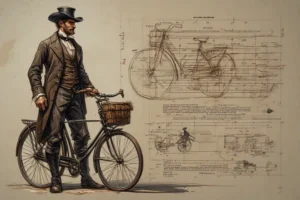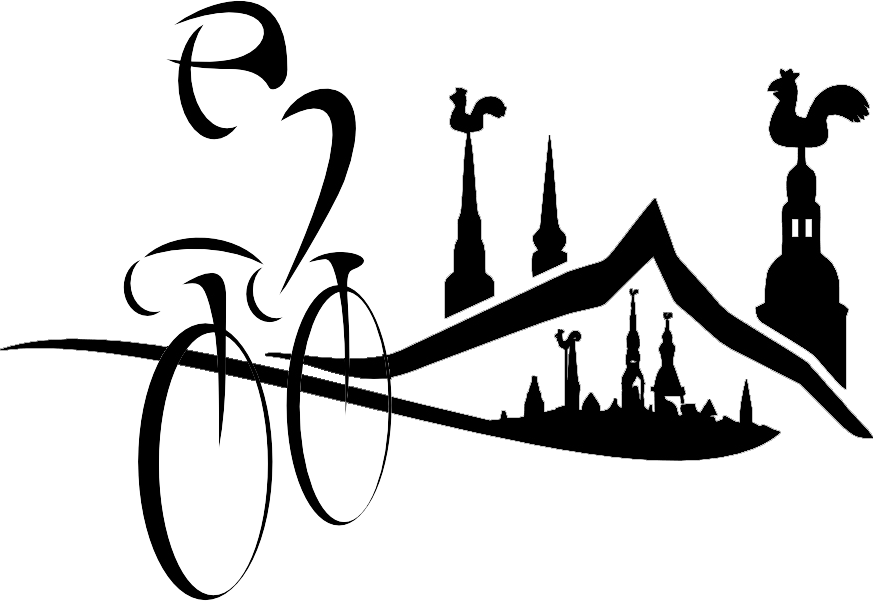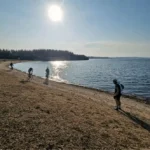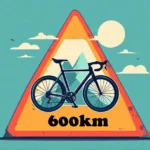The Epic History of Audax Cycling: From 19th Century Origins to Modern Randonneuring

Introduction: The Enduring Allure of Long-Distance Cycling
The world of endurance sports contains few challenges as demanding yet rewarding as Audax cycling. This unique discipline, also known as randonneuring, represents not merely a physical test but a philosophical approach to cycling that values perseverance over speed, camaraderie over competition, and personal achievement over podium finishes. Unlike conventional bicycle racing where the fastest rider wins, Audax events measure success by a rider’s ability to complete extraordinary distances within generous but firm time limits while adhering to strict self-sufficiency principles.
The history of Audax cycling stretches back to the late 19th century, emerging from the same cultural milieu that gave birth to the modern bicycle and the earliest organized cycle races. What began as informal challenges among French and Italian cycling enthusiasts evolved into a sophisticated global network of events governed by traditions that have remained remarkably consistent for over a century. At the heart of this movement lies the Paris-Brest-Paris event, the oldest long-distance cycling challenge in continuous existence, which serves as both the spiritual home and ultimate proving ground for randonneurs worldwide.
This comprehensive exploration of Audax history will trace the sport’s development through several distinct eras: from its experimental beginnings in the 1890s, through its formalization in the early 20th century, its postwar expansion across continents, to its current status as both a guardian of cycling tradition and an incubator for modern ultra-endurance events. Along the way, we will examine how technological advancements, social changes, and philosophical debates have shaped the Audax experience while leaving its core values intact.
The Birth of Organized Long-Distance Cycling (1890-1914)
The closing decades of the 19th century witnessed a bicycle craze that swept across Europe and North America. As bicycle technology advanced from the precarious penny-farthing to the modern safety bicycle with pneumatic tires, cycling transitioned from novelty to practical transportation and eventually to organized sport. It was against this backdrop that the first organized long-distance cycling challenges emerged.
In France, the newspaper Le Petit Journal played a pivotal role in establishing endurance cycling events. Having already organized the Paris-Rouen horseless carriage race in 1894 (considered the world’s first motor race), the publication turned its attention to bicycles with the inaugural Paris-Brest-Paris event in 1891. This staggering 1,200 kilometer route from the French capital to the Atlantic coast and back was conceived as both a test of human endurance and a showcase for bicycle reliability. Charles Terront won this first edition in 71 hours and 22 minutes, riding a bicycle equipped with the relatively new innovation of pneumatic tires.
Meanwhile in Italy, a parallel movement was developing under the leadership of Henri Desgrange, who would later gain fame as the creator of the Tour de France. In 1897, Desgrange introduced the Audax Italiano format, establishing several key concepts that would define long-distance cycling: predetermined routes, time limits, and the requirement that riders complete the course without external assistance. The term “Audax,” derived from Latin meaning “bold” or “daring,” perfectly captured the spirit of these undertakings.
The turn of the century saw the formal organization of these activities. In 1904, the Audax Club Parisien (ACP) was founded, creating the first governing body for long-distance cycling. The ACP initially promoted a specific style of riding where participants traveled together in a group (peloton) at a steady pace of about 22.5 km/h, led by an appointed route captain. This “brevet” system, named after the certificates awarded to successful participants, established the framework that would eventually evolve into modern randonneuring.
The Interwar Years: Diverging Philosophies (1918-1939)
The period between the World Wars proved decisive in shaping the character of long-distance cycling. What had begun as a unified movement began to fracture along philosophical lines regarding the fundamental nature of the sport. The central debate revolved around the question of whether Audax should emphasize collective group riding or individual achievement.
Traditionalists within the Union des Audax Français (UAF) maintained that the essence of Audax lay in the communal experience of cyclists traveling together at a regulated pace. This approach emphasized discipline, uniformity, and the social aspects of long-distance riding. The group dynamic was considered essential, with riders expected to maintain formation and support each other throughout the journey.
A more individualistic vision emerged under the auspices of the Audax Club Parisien. Advocates of this approach argued that long-distance cycling should accommodate different riding styles and paces, with the primary challenge being each rider’s personal journey rather than their ability to conform to group discipline. This philosophy gave birth to what we now recognize as randonneuring – events where participants ride the same route but at their own pace, checking in at designated controls along the way.
This philosophical divide became institutionalized in 1921 when the ACP created distinct rules for individual participation in their events. The split was further cemented in 1931 when Paris-Brest-Paris transitioned from a professional race to an amateur randonneuring event, adopting the ACP’s individual participation model. This decision preserved PBP’s status as the ultimate long-distance cycling challenge while redefining it as a test of personal endurance rather than pure speed.
During this period, the basic structure of modern randonneuring events took shape. The concept of the “brevet” series emerged, with riders challenged to complete increasingly long distances (200km, 300km, 400km, and 600km) before attempting the ultimate 1200km challenge of PBP. The Super Randonneur award was introduced to recognize those who completed the full series in a single season.
Postwar Expansion and Globalization (1945-1990)
The aftermath of World War II saw long-distance cycling evolve from a primarily European activity to a global phenomenon. As transportation networks improved and cycling cultures developed worldwide, the Audax/randonneuring model spread to new continents while maintaining its traditional European roots.
In Britain, long-distance cycling had existed since the late 19th century through events organized by the Cyclists’ Touring Club, but the formal Audax tradition arrived in 1976 with the establishment of Audax UK. The British interpretation of randonneuring developed its own distinct character, with a greater emphasis on challenging terrain and a thriving culture of DIY route creation.
North America’s engagement with randonneuring began in earnest during the 1970s, initially through small groups of enthusiasts on the West Coast. The Seattle International Randonneurs, founded in 1979, became particularly influential in establishing the sport in the United States. The American approach often emphasized even greater self-sufficiency than European events, reflecting both the distances between services in rural America and the cultural value placed on independence.
Japan developed perhaps the most distinctive randonneuring culture outside Europe. Introduced in the 1980s, Japanese Audax events combined traditional brevet rules with meticulous organization and a strong emphasis on group riding that harkened back to the original Audax philosophy. The Japanese approach to long-distance cycling also incorporated elements of the country’s existing touring traditions, creating a unique hybrid style.
Throughout this period of geographic expansion, Paris-Brest-Paris remained the undisputed pinnacle of randonneuring. The 1975 edition marked a turning point as participation began growing exponentially, from 360 finishers that year to over 4,000 by the turn of the century. This growth reflected both the globalization of the sport and increasing interest in endurance athletics more broadly.
The Modern Era: Technology and Tradition (1990-Present)
The digital revolution has transformed nearly every aspect of cycling, and randonneuring has been no exception. Modern randonneurs benefit from technological advancements that would have been unimaginable to early Audax pioneers, even as debates persist about how much technology should be embraced.
Navigation represents perhaps the most significant change. Early randonneurs relied on handwritten route sheets and roadside signage. The introduction of cycling-specific GPS devices in the early 2000s revolutionized route finding, followed by smartphone apps like RideWithGPS that combine navigation with social features. While these tools have made participation more accessible, some traditionalists argue they reduce the self-reliance that was once central to the randonneuring experience.
Bicycle technology has also advanced dramatically. Modern randonneurs can choose from lightweight carbon frames, electronic shifting, disc brakes, and high-efficiency lighting systems that make night riding safer than ever. Paradoxically, this has led to a revival of interest in traditional randonneuring bicycles – steel-framed machines with simple, reliable components that recall the bikes of the sport’s early days.
The 21st century has seen the rise of “ultracycling” events that push distance limits far beyond traditional randonneuring. Races like the Transcontinental (4,000km across Europe) and the Indian Pacific Wheel Race (5,500km across Australia) attract riders seeking even greater challenges. While these events share randonneuring’s emphasis on self-sufficiency, they typically emphasize speed over completion, creating a new genre of ultra-distance competition.
Women’s participation in randonneuring has grown significantly, though the sport remains predominantly male. Organizations like Women’s Audax and Dames à Vélo have worked to make long-distance cycling more accessible to women through mentorship programs and women-specific events. Pioneers like Louise Roger (one of the first female PBP finishers in the 1930s) and modern champions like Cristiana Bonetto (who holds multiple women’s distance records) have demonstrated that endurance cycling knows no gender boundaries.
Audax Cycling History Timeline
Hover over the red markers to explore key moments in long-distance cycling evolution
Charles Terront wins the inaugural 1,200km race in 71 hours on Michelin pneumatic tires. Riders carried their own repair kits with rubber cement and spare parts.
Henri Desgrange (later Tour de France creator) establishes formal rules:
- Minimum 200km distance
- Time limits based on terrain
- No outside assistance allowed
The ACP is founded, creating the first governing body for long-distance cycling. Early events required group riding at 22.5 km/h pace led by a “capitaine de route.”
Paris-Brest-Paris shifts from professional race to amateur randonneuring event. The 1931 edition had 84 starters and 42 finishers, with Lucien Buysse winning in 49h55m.
Audax UK is founded, adapting French traditions to British roads. The UK developed unique “permanent” routes that riders could attempt anytime.
American randonneuring becomes formalized with RUSA’s founding. The Seattle International Randonneurs had been hosting events since 1979.
New events push boundaries beyond traditional formats:
- Transcontinental Race (4,000km unsupported)
- Indian Pacific Wheel Race (5,500km across Australia)
- 24-hour distance records exceed 900km
The Culture and Philosophy of Randonneuring
At its core, randonneuring maintains a distinctive culture that sets it apart from other forms of cycling. This culture blends elements of athletic challenge, personal exploration, and communal tradition in a way that has proven remarkably durable over more than a century.
The concept of the “brevet” remains central to randonneuring philosophy. Unlike a race where the fastest rider wins, a brevet is fundamentally a personal challenge where success means completing the course within the time limit. This creates an environment where riders of vastly different abilities can share the same event, each pursuing their own goals while benefiting from the collective energy of the group.
Self-sufficiency is another cornerstone of randonneuring tradition. While organized rest stops and support vehicles are standard in most cycling events, randonneurs are expected to handle their own mechanical issues, navigation, and nutrition. This ethic stems from the sport’s origins when cyclists traveled through rural areas where outside assistance simply wasn’t available. Even today, when services are more plentiful, the ideal of the self-reliant rider remains powerful.
The social dimension of randonneuring also distinguishes it from competitive cycling. Because speed is secondary to completion, riders often form impromptu groups on the road, sharing conversation, encouragement, and sometimes even food or spare parts. Many participants describe these transient communities as one of the most rewarding aspects of long-distance cycling.
Perhaps most importantly, randonneuring maintains a deep respect for its own history. Events like Paris-Brest-Paris preserve traditions that date back to the 19th century, from the ceremonial start at the Saint-Quentin-en-Yvelines velodrome to the iconic routing through the Breton countryside. This continuity creates a tangible connection between modern participants and the pioneers who established the sport.
The Future of Long-Distance Cycling
As randonneuring enters its second century, it faces both challenges and opportunities. The sport’s traditionalism sometimes conflicts with modern expectations about accessibility and inclusivity. At the same time, growing interest in endurance athletics and adventure cycling presents new possibilities for expansion.
One significant development is the increasing overlap between randonneuring and bicycle touring. While traditionally distinct activities – randonneuring emphasizing timed challenges and touring focusing on leisurely travel – many modern cyclists blend elements of both. Events like the TransAm Bike Race combine randonneuring-style self-sufficiency with cross-country touring routes, creating new hybrid forms of long-distance cycling.
Environmental concerns may also shape randonneuring’s future. As climate change alters weather patterns and affects rural communities through which many classic routes pass, organizers may need to adjust traditional courses. Conversely, randonneuring’s minimal environmental impact compared to supported events could make it increasingly attractive in an eco-conscious world.
Technological advancements will continue presenting both opportunities and dilemmas. Electronic drivetrains, advanced lighting systems, and GPS navigation have already changed the randonneuring experience. Future developments in areas like wearable performance monitors or even augmented reality displays could further transform how riders approach long-distance challenges. The sport will need to balance these innovations with its traditional values.
Ultimately, the enduring appeal of randonneuring lies in its ability to offer a profoundly authentic experience in an increasingly mediated world. In an era of digital distractions and instant gratification, spending 90 consecutive hours riding a bicycle through day and night represents a radical act of presence and perseverance. This fundamental human challenge – to push beyond perceived limits through sheer determination – ensures that randonneuring will remain relevant no matter how technology or society evolves.
Conclusion: The Timeless Challenge
The history of Audax cycling and randonneuring tells a story of remarkable continuity amid change. From the dusty roads of 1890s France to the global network of events today, the essential challenge remains the same: to travel extraordinary distances under one’s own power, relying on preparation, perseverance, and sometimes the kindness of fellow riders.
What began as a test of bicycle technology and human endurance has evolved into a sophisticated sporting tradition with its own culture, rituals, and philosophy. Through world wars, technological revolutions, and social transformations, the simple act of riding long distances for the sake of the journey has maintained its power to inspire and transform.
For those who accept the challenge, randonneuring offers more than physical accomplishment. It provides a rare opportunity to experience landscapes intimately, to test personal limits, and to join a centuries-old tradition of endurance cycling. In our fast-paced modern world, the deliberate pace and profound simplicity of long-distance cycling may be more valuable than ever.
As the wheels keep turning and new generations of riders take up the challenge, the history of Audax continues to be written – one kilometer at a time, by cyclists around the world who still find meaning in the simple, profound act of moving forward under their own power.




